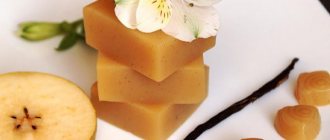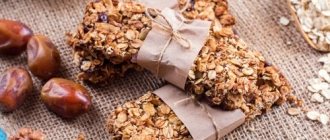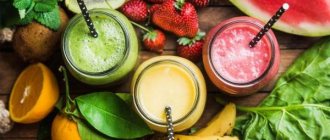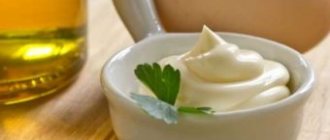Calorie content of marmalade lemon slices per 100 grams
The calorie content of marmalade lemon slices per 100 grams is 326.2 kcal. In 100 g of product:
- 0.11 g protein;
- 0 g fat;
- 81.1 g carbohydrates.
To prepare this sweet, molasses, sugar, agar, citric acid, dry lemon juice, dried egg white, flavorings, sodium lactate and curcumin are used.
Thanks to the presence of marmalade in agar, lemon slices are rich in iron, iodine and calcium. Lemon juice used to produce sweets is enriched with vitamins B, C, PP, E, and minerals manganese, calcium, sodium, phosphorus, and iron.
Chewable
Recently, it is almost impossible to purchase real marmalade, and the one that is sold in large quantities is very far from natural and healthy. Transparent as glass, the store-bought product is replete with all the colors of the rainbow, which are simply impossible to obtain from natural ingredients. In addition, chewing marmalade created “using new technologies” has a calorie content of about 350-425 kcal/100 g, which practically reduces the validity of its use to zero. The composition includes preservatives, dyes, flavors, various food additives, as well as a wax-fat mixture (usually carnauba wax) to create a dense structure and prevent the candies from sticking together. Such products are most often produced in a form that is attractive to children - these can be “worms”, “bears”, multi-colored “lemon slices” and other figures.
In this segment of the domestic marmalade market, another manufacturer stands out - the Sladbury confectionery factory, which produces a variety of products in this category according to its own specifications (technical conditions). The composition, which in rare cases is reflected on the packaging, indicates the unnaturalness of such sweets. Thus, three-color marmalade with a calorie content of 310 kcal/100 g consists of sugar, starch syrup, dried egg white, flavorings and dyes, although with the addition of applesauce and agar. And the Sweetbury souffle with marmalade with a calorie content of 363 kcal/100 g does not have a description of the composition at all, but only an indication that the candies are made according to specifications.
And various “worms”, “bears” and “lemon drops” in the largest quantities come to the Russian consumer from Hungary, where one of the many factories of the German sweets manufacturer Haribo is located. The calorie content of marmalade from this production is 341–385 kcal per 100 grams, and the composition is simply amazing with the variety of substances, mainly of synthetic origin.
Thus, “Golden Bears” from Haribo consist of the following components:
- sweeteners - molasses (starch), sugar, dextrose (the same glucose), invert sugar syrup;
- gelling component - gelatin;
- concentrates of fruit and berry juices;
- acidity regulator - citric acid;
- plant concentrates;
- flavorings;
- glazing agents - beeswax and carnauba wax;
- stabilizer – locust bean gum.
The “slices” additionally include:
- stabilizer – tricalcium citrate;
- dyes are copper complexes of chlorophyllins.
“Worms” are characterized by almost the same set of ingredients. In general, any of these types of chewing marmalade products has a fairly dense structure, which becomes almost rubbery after 1–2 days of storage in an open package. If we consider similar products from all other domestic and foreign manufacturers, there will not be much difference in composition and number of calories. In general, the production technology requires the mandatory use of all the above components, so there is no reason to talk about its benefits.
Homemade marmalade recipe
To create apple marmalade you will need:
apples (3 pcs.), gelatin (tablespoon), cinnamon powder on the tip of a teaspoon.
Preparation: Cut the peeled apples into slices and place in the microwave for 10 minutes. Beat the prepared apple slices into puree, cinnamon and undiluted gelatin. Pour the resulting mixture into molds and place in the refrigerator. The calorie content of the treat will be no more than 60 kcal per 100 g.
It is permissible to use not only apples, but also pineapples and even pears in making homemade chocolate. It is important that the fruit is fully ripe.
From all of the above, we can draw the following conclusion: you can eat marmalade on a diet, but only natural, top-grade ones from producers who have proven themselves well, or you can prepare it yourself.
Author of the article: Terekhova Elena
Varieties of marmalade
There are many ways to make marmalade. Calorie content per 100 grams depends on the type of treat. At a minimum, one should distinguish between jelly marmalade, jelly-fruit, fruit and berry, chewing and sandwich. There are also natural products and inexpensive options that are made using various additives.
Now about the energy value. The stereotype about the low value arose about thirty years ago, when marmalade was natural and its calorie content was really only 220-270 kcal per 100 grams.
Today, manufacturers use flavor enhancers, flavors and preservatives, which not only call into question the usefulness of the product, but also increase its nutritional value. The calorie content of marmalade in sugar, in chocolate, with fillings ranges from 350-450 kcal or more, depending on the ingredients.
At the same time, there is no fat in marmalade, which gives it an advantage over most other desserts. It is sweet enough that you can't eat too much of it, and one cube weighs about 15 grams and contains 35-60 kcal.
Calorie content of worm marmalade per 100 grams
The calorie content of worm marmalade per 100 grams is 330.2 kcal. In 100 g of product:
- 3.63 g protein;
- 0 g fat;
- 77.1 g carbohydrates.
This marmalade is enriched with vitamin C, which has a beneficial effect on the condition of the heart and blood vessels, and helps to activate the immune functions of the body. Eating sweets normalizes the functioning of the nervous system and helps prevent stress.
Read: Calorie content of steamed cod
At the same time, we should not forget that worm marmalade contains a lot of unnatural flavors and dyes, which can exacerbate diseases of the stomach, intestines, pancreas and gall bladder. Sweet acids have a negative effect on tooth enamel and provoke the development of caries.
Sandwich marmalade
This delicacy, as the name suggests, is intended to be spread on bread, and therefore looks like a bar similar to butter.
The structure is slightly different from regular marmalade: the sandwich version is a little softer and easily spreads on the surface of the bread. But the caloric content is approximately the same - 310 kcal per 100 grams. However, the remaining components of the sandwich should be added to this figure, and if you are watching your figure, then God forbid that this is yeast-free bread with bran, and not a fresh bun greased with butter.
Jelly marmalade: calories
Jelly marmalade is more delicate in consistency, while dry agar-agar (seaweed) powder is often used as a thickener, in addition to pectin. The composition of jelly marmalade also includes sugar, molasses, fruit essence, food coloring, citric acid, and flavorings. Jelly marmalade based on agar-agar has a brighter color and a beautiful break.
The calorie content of jelly marmalade depends on the composition and can be from 280 to 350 kcal; jelly marmalade is called a carbohydrate dessert, since the protein and fat content in it is zero, and carbohydrates in such marmalade can be from 75.0 to 80.0 g.
Derived from seaweed, agar-agar contains no calories; swelling in the stomach, fiber improves peristalsis, normalizing the functioning of the gastrointestinal tract, and facilitating the functioning of the liver. The main beneficial qualities of agar-agar:
- It is a source of iodine, which the body needs for normal functioning of the thyroid gland;
- The high content of vitamins B5, E, K and iron, calcium, magnesium, copper provides the body with these essential elements;
- Helps eliminate toxins.
Often, when making marmalade, agar-agar can be replaced with gelatin - this is a thickener of animal origin, which is extracted from the veins, cartilage and bones of animals (vegetarians should know about this). This replacement slightly increases the calorie content of marmalade, since gelatin contains fats, but excludes it from the menu of strict vegetarian diets. Useful properties of gelatin:
- Helps improve the condition of hair, skin, nails;
- Participates in strengthening the skeletal system and cartilage.
Types of product and their calorie content
Marmalade is most often classified according to several criteria:
- by production method;
- according to form;
- by composition.
In the latter case, there are desserts made without sugar, with sugar and with fructose, as well as with pectin, agar-agar or gelatin.
As for the form and method of preparation, the most famous types are:
- Plast. Most often, this type is prepared from apples or with their participation. This fruit contains natural pectin, which thickens the fruit puree, achieving the desired consistency. Plast marmalade is considered the most useful, since during its production (fruit puree is slowly boiled with sugar until thickened) most of the vitamins are preserved. It rarely contains additional additives, and the disadvantages include its not very attractive appearance and short shelf life. Calorie content – 250 kcal.
- Jelly. Not the healthiest variety, it is created by combining fruit juice, sugar and various additives (dyes, flavors). Both agar-agar and pectin can be used as a thickener. The main advantage is presentation. The bright color and pleasant aroma attracts buyers, but the benefits of marmalade are minimal. Calorie content – 321 kcal.
- Chewing. A product with a very elastic consistency, which parents often use as an alternative to children's chewing gum. Made from sugar, fruit juices, additives and gelatin. Not the healthiest product due to its composition. The main advantage is a long shelf life. Calorie content – 350 kcal.
The most useful is marmalade made from fruit puree or juice, agar-agar and a minimum amount of sugar.
The benefits of marmalade
Marmalade made from pectin is traditionally considered the most useful. Such sweets:
- reduce cholesterol levels;
- normalize the metabolism of carbohydrates and fats;
- accelerate the healing processes of burns and wounds;
- provide prevention of bacterial diseases of the gastrointestinal tract;
- cleanse the body of heavy metal compounds;
- normalize liver functions;
- improve gastric motility;
- restore the nervous system and strength after heavy mental and physical stress.
Homemade
Homemade marmalade is prepared very simply from inexpensive and affordable products, so it is considered the best alternative to store-bought sweets. In addition, the composition, quality and calorie content of homemade marmalade can be adjusted at your discretion, obtaining exactly the product that is needed in each individual case. By choosing one or another recipe, you can prepare either a dietary dessert containing 40–50 kcal per 100 grams, or a more nutritious but very healthy sweet. The second option is ideal for children or adults who need quick recuperation, for example, after an illness or during increased mental and physical stress.
The beneficial properties of the natural product are primarily due to the fruit and berry base, depending on the type of fruit chosen. But, since all fruits and berries do not contain exactly the same vitamin and mineral set, the key effects on the body of different marmalade treats will be somewhat different. By regularly including marmalade of a certain composition in your diet, you can quickly get the following results:
- apple – contains a lot of fiber and pectin, activates digestion, captures and removes toxic compounds, improves the production of gastric juice, helps get rid of constipation, destroys pathogenic bacteria in the intestines, accelerates the treatment of viral diseases and colds;
- citrus - increases metabolic rate, promotes better absorption of nutrients from food, helps treat colds and ARVI, reduces appetite, activates fat burning processes;
- apricot - good for vision, increases energy, produces a mild laxative effect, accelerates wound healing, supports heart function, strengthens blood vessels;
- plum - gently cleanses and normalizes the activity of the gastrointestinal tract, enhances intestinal motility, reduces the severity of symptoms of atherosclerosis, destroys cholesterol deposits in blood vessels, helps cleanse the kidneys;
- cherry - prevents the appearance of cancer cells, improves intestinal function, has a diuretic effect, helps with heart attacks, strengthens blood vessels, increases hemoglobin levels, normalizes blood pressure, reduces the likelihood of heart attacks.
The enormous benefit of a marmalade composition based on these and any other fruits or berries is to strengthen the immune system and improve health by saturating the body with various vitamins, minerals and fiber.
In general, for the preparation of such homemade delicacies, fruits and berries are most often chosen not so much for their usefulness as for their taste. It should be borne in mind that the acidity and sweetness of the fruit also indicates the presence of certain properties, in particular:
- sour - reduce cholesterol levels, promote the breakdown of saturated fats, accelerate the excretion of uric acid;
- sweet and sour - activate digestion, contain more proteins, help build muscle mass;
- sweet – optimize the functioning of the nervous system, provide long-term saturation.
Fruit and berry marmalade delicacy made from sweet and sour or sweet fruits without added sugar is a complete dessert with excellent taste and minimal calorie content.
As in industrial production, in home preparation pectin, gelatin, agar-agar or mixtures thereof can be used as a thickener. Therefore, the additional benefit of the marmalade composition is also determined by the gelling component used. And in some cases, when the recipe calls for long-term boiling of fruit or berry mass, the properties of this substance become decisive for the benefits of the entire product.
Rating of food delivery for weight loss
Delivery of food with calculated calorie content, ready-made diets. No more cooking and counting calories!
Go
Go
General information about marmalade
Depending on the preparation method, the composition of marmalade can vary significantly, as it involves the use of a different set of ingredients in production (pectin, agar-agar, flavorings and aromas, etc.).
The number of calories in marmalade also largely depends on the technology of its production. If previously only natural ingredients were used in preparation, now production involves the addition of various preservatives and flavors. And while such additives have a positive effect on the appearance and taste, the same cannot be said about the calorie content and benefits of the product.
How many calories are in marmalade
The manufacturing technology of modern marmalade, in addition to prescription components, allows for the use of various additives that make it possible to produce cheaper and more accessible types of marmalade. How many calories are in marmalade depends on the presence of the type of additives in the final product and the method of its manufacture.
As a gelling component in modern marmalade production, pectin, found in many fruits, is used, agar-agar is an extract from seaweed, and gelatin is a substance extracted from fat-free cartilage, bones and veins of animals. The average calorie content of marmalade per 100 g of finished product is 320 kcal, it contains 0.1 g of proteins, 0.1 g of fat, 79.3 g of carbohydrates.
Depending on the gelling agent used to produce the dessert, marmalade is produced:
- Fruit and berry;
- Jelly;
- Jelly-fruit;
- Chewing.
Marmalade for weight loss:
The main advantage of marmalade over other sweets is its low calorie content, which makes it safe for weight loss. However, it contains sugar, albeit in small quantities, so you should not abuse this delicacy.
In addition, the ability of marmalade to cleanse the body of harmful substances, including salts and toxins, cannot but affect the functioning of the body and the cleansing of the digestive system, which will begin to work normally and will get rid of breakdown products much faster, preventing them from becoming into fat deposits.
Considering the diuretic properties of marmalade, consuming it can avoid the formation of swelling and prevent the accumulation of excess fluid in the body. And nutrients and vitamins will improve metabolic processes, which will also contribute to weight loss.
Recipes for making marmalade
Fruit platter
Calorie content is 289 kilocalories per 100 grams of product.
Ingredients:
| Fresh oranges | 2-3 pcs. |
| Kiwi | 2-3 pcs. |
| Strawberry | 400 g |
| Granulated sugar | 135 g |
| Pectin | 80 g |
Cooking sequence:
- Peel two or three fresh oranges.
- Squeeze the juice from the oranges and add 30 grams of granulated sugar and 15 grams of pectin to it. Mix these ingredients until a homogeneous mass is formed. Under no circumstances should even the slightest lumps remain.
- Place a saucepan on the stove and pour the orange mixture into it. Warm it up and bring it to a thick consistency, stirring constantly. This process will take us no more than 15 minutes. Then turn off the stove and leave the mixture to cool.
- Peel two or three fresh kiwis and grind in a blender.
- Add 30 grams of granulated sugar and 20 grams of pectin to the resulting mass. Mix the ingredients until smooth.
- Place the mixture in a separate saucepan and heat for ten minutes until thick.
- Wash thoroughly, dry and mash 400 grams of strawberries with a fork into a homogeneous mass. You can use both fresh and frozen strawberries, but the second one will have to be slightly defrosted in advance. You can also use a blender instead of a fork.
- Add 75 grams of granulated sugar and 45 grams of pectin to the strawberries. Mix everything, put it on the stove and cook until thick for 10-15 minutes.
- When we have three containers of fruit puree ready, we begin to prepare the marmalade molds.
- Grease all the molds with a small amount of butter. If the molds are silicone, then no oil is needed.
- Pour the puree into molds and place in the refrigerator for 2-4 hours until completely set.
- When the delicacy has hardened, remove it from the molds, roll it in sugar or powdered sugar and serve with tea.
Marmalade with agar-agar
Calorie content is 305 kilocalories per 100 grams of product.
Ingredients:
| Agar-agar | 30 g |
| Water | 125 g |
| Fruit puree | 200 g |
| Granulated sugar | 120 g |
Cooking sequence:
- Pour 30 grams of agar-agar with 125 grams of clean water at room temperature, mix well and leave for one hour.
- After an hour, pour the diluted agar-agar into a saucepan suitable for frying, put it on high heat and bring to a boil. Be sure to stir the mixture during the process.
- When the mixture boils, add 120 grams of granulated sugar, reduce the heat to low and boil for two minutes.
- Remove the pan from the heat and add 200 grams of any fruit puree to it. Mix thoroughly until smooth, getting rid of lumps. Let it cool a little.
- Pour the fruit mixture into molds and place in the refrigerator to harden for one hour.
- Remove the finished marmalade from the molds, sprinkle with sugar and taste.
Marmalade in the diet of those watching their figure
Compared to many other sweets - cakes, pastries, candies and chocolate - marmalade is a fairly light and harmless product. Of course, fresh fruits and berries are much healthier, but sometimes you want variety. In this case, you need to give preference to natural fruit and berry marmalade, the calorie content of which is lower than other types, and the composition is the most natural. In the store, you should carefully study its components: often high-quality fruit and berry marmalade based on applesauce or other pectin-rich fruits is more expensive than its analogues with artificial thickeners and having only juice or even color from the fruit. But such a dessert will not harm either the figure or the digestive tract. Or you can prepare the marmalade yourself, which will allow you to control all its components. By using sweet fruits, you can do without sugar, which will reduce the calorie content of marmalade and the level of carbohydrates in it. Of course, it may not look as appetizing as a store-bought one, especially for molded marmalade, but it will be completely natural, which will eliminate concerns about your health.
Calories, kcal:
Proteins, g:
Carbohydrates, g:
If fruit and berry marmalade is produced in accordance with GOST 6442-89, this is the highest indicator of product quality. When choosing fruit and berry marmalade, pay attention to the appearance of the sweetness. The product is of the correct shape according to its variety, the mass is viscous without lumps or veins. If fruit and berry marmalade is covered with confectionery glaze, the surface of the candy should be glossy without a whitish coating. Diabetic marmalade is not coated with sugar. The packaging in which the marmalade is stored is without damage. Be sure to check the expiration date of the product.
Jelly
Real marmalade made from fruit or berry puree with the addition of a natural gelling component and a small amount of sugar is a truly healthy sweet and a healthy food product. In different countries, it is customary to prepare such a dessert from certain fruits, for example, in Spain - from quince, and in England - from oranges. In Russia, the most common is apple marmalade, to which purees from other fruits or berries are often added to obtain different tastes.
Important! When apples are strongly boiled, the pectin contained in them is quite enough to create a mass that is dense in structure. In such cases, the main benefit of the finished product is determined by the properties of this gelling substance, since prolonged cooking leads to the destruction of most of the vitamins found in the pulp of the fruit.
But in modern industrial or home production, to obtain a jelly-like consistency, pectin, gelatin or agar-agar are often added to the boiled marmalade mass, which can significantly reduce the duration of heat treatment. Each of these substances is a natural thickener, but has different properties and effects on the body. But the main thing is that they allow you to preserve much more vitamins in the fruit and berry puree (juice) used.
If we talk about the calorie content of marmalade, it directly depends on the amount of added sugar and varies between 40–320/100 g, and even higher when using additional components. Thus, when enrobed in chocolate, the number of calories increases by 10-15% and can reach 410 kcal per 100 grams. Also, the energy value of the finished sweet is influenced to some extent by the gelling component used. The calorie content of these substances differs slightly, but still there is some difference:
- gelatin contains 362 kcal/100 g;
- in pectin - 325 kcal/100 g;
- in agar-agar – 300 kcal/100 g.
Moreover, in terms of its gelling properties, agar-agar is 2-4 times (depending on quality) superior to gelatin. In other words, 1 g of agar-agar replaces 2-4 g of gelatin, so much less is required to obtain a jelly of the same consistency. The problem is that this beneficial plant component, obtained from algae, is much more expensive than the product of processing (digestion) of animal collagen. At the same time, natural fruit and berry marmalade on agar, especially without added sugar, is an ideal component of a diet with a minimum calorie content of 40 kcal/100 g. A similar product made on pectin or gelatin will contain an average of 57 kcal per 100 grams.
Since these days marmalade is produced very diverse in shape, size and composition, the calorie content of 1 piece. quite difficult to determine. If we are talking about the above-mentioned dietary product, then one candy weighing 20-30 g will contain 8-17 kcal, and in a sweeter and higher-calorie candy this parameter can rise to 60-110 calories.
In any case, a natural delicacy, prepared without prolonged boiling, has a wide range of beneficial effects on human health, even if it is not always suitable for losing weight or maintaining normal weight. And if there is no sugar in the composition, it can also become an ideal dietary product. Regular consumption of this sweetness provides the following results:
- normalization of carbohydrate and fat metabolism;
- reducing the level of “bad” cholesterol;
- acceleration of wound healing on the skin surface;
- normalization of liver function;
- activation of intestinal motility;
- ensuring the prevention of bacterial gastrointestinal diseases;
- improvement of intestinal microflora;
- cleansing from toxins and heavy metals;
- restoration of the nervous system;
- increasing strength and performance during heavy mental and physical stress.
Important! To be guaranteed to purchase high-quality natural marmalade, you must choose a product whose packaging indicates the appropriate ingredients or is produced in accordance with GOST. If the composition is not indicated, and production is regulated by technical specifications (TU), then most likely it is made using flavors and dyes.
This is due to the fact that these days any small workshop can produce sweets according to its own technical specifications (TU). Therefore, it is impossible to control the use of chemical additives and the overall composition of the product. In this case, the calorie content of marmalade is usually greatly increased due to the increased sugar content and the high energy value of some food additives. But the main danger lies not even in the excessive calorie content, but in the unnaturalness of its composition. Instead of fruits and berries, synthetic flavor enhancers (“identical to natural”) and bright aggressive dyes are used.
Really high-quality and healthy sweets are usually produced by well-known confectionery brands, but they are not cheap. One of these manufacturers is the Belevskaya Pastila factory, which produces a wide range of sweet products, including Belevsky Marmalade. The range of this product is presented in different tastes, it does not contain any harmful additives, therefore it is suitable for baby food.
The basis of the composition is applesauce, and other pureed berries or fruits are added to obtain a variety of flavors. It also contains pectin, citric acid, sugar and glucose syrup. Despite its complete naturalness, the calorie content of marmalade is 290 kcal/100 g, but for this industrially produced product this is the minimum indicator. Each candy is sprinkled with a small amount of fine crystalline sugar, the consistency resembles thick jam and does not have the transparency inherent in most types of mass-produced marmalade products. Some excessive sweetness is due to the fact that the proportion of sugar in the composition is regulated by GOST requirements and the technological process.
Types of marmalade
Currently, there are several types of marmalade, the most common of which are jelly, chewing, jelly-fruit and fruit-berry. In addition, the product that is manufactured industrially is divided into 2 main categories. Natural types of marmalade, which are produced by the traditional method of gradual evaporation of the fruit mass, belong to the first category. The second is represented by less expensive products using all kinds of additives.
Natural marmalade, which is a healthy product, is made from fruit puree with the addition of a small amount of granulated sugar. For example, in England it is customary to make it from oranges, and in Spain marmalade is made from quince. Meanwhile, in our country, natural marmalade based on apples is considered the most common. In addition, there is often a delicacy made from apricot or plum puree.
Composition of marmalade
Marmalade was first made in France, but the prototype was the eastern Turkish delight, which began to be made hundreds of years ago from fruits and honey.
The ideal composition of marmalade: fruit puree, sugar and pectin. The latter is used as a thickener. It is not a synthetic substance, but a natural component of most fruits.
Natural marmalade is quite expensive, so there are budget options made using gelatin. Gelatin is made from animal cartilage and bones. It is much cheaper than pectin, and the delicacy with it is higher in calories.
Bright multi-colored marmalade looks beautiful and appetizing, but most often this is the result of artificial colors, which are of no benefit. The more inconspicuous the delicacy, the more attention it deserves, but in any case, carefully read the composition.
Video about the benefits and harms of marmalade
After watching this video, you can learn about the calorie content of marmalade, what benefits and harm it can cause to our body.
We also highly recommend reading about the calorie content of grapefruit. Or maybe you are a fan of funchose? Then hurry to find out how many calories it contains. Or maybe you like beets? Then an article about its calorie content will be useful to you. And be sure to pay attention to the article about the calorie content of raisins.
So we learned all about the calorie content of marmalade. Many did not know that this delicacy can be not only healthy, but also dietary. In addition, it can be easily prepared at home. Did you know about the properties of this product? Do you like marmalade? Have you ever tried a natural delicacy? Share your opinion and experience in the comments!
Author of the publication
Main conclusions
Marmalade is one of the most harmless sweets, but only if you follow the rules for its preparation:
- The main raw materials for preparing the product are fruits, berries and even vegetables.
- Eating this type of dessert improves the functioning of the gastrointestinal tract, blood circulation, and reduces the level of “bad” cholesterol and blood sugar.
- The marmalade contains vitamin complexes, beneficial nutrients and amino acids.
- It improves memory, normalizes the functioning of the nervous system and strengthens the immune system.
- The main harm lies in the additives that are used in the industrial production of the product.
- Synthetic dyes, flavors and stabilizers used in the production of cheap marmalade can lead to allergies, kidney and liver diseases.
- There are 3 main types of dessert: sheet, jelly and chewing. The most useful are plastic ones.
- You can prepare marmalade yourself at home, controlling its calorie content and composition.
Today you can buy marmalade in almost any grocery store. However, before paying, you should familiarize yourself with the composition so that the sweetness, designed to help with your diet, does not have the opposite effect.
Share your recipes for your favorite diet sweets and ways to cheer up while on a diet.
What are the benefits of marmalade?
It is important to understand that only natural, high-quality marmalade can bring any benefit to the human body. It is the natural ingredients that are used in the preparation of the delicacy that endow it with benefits and nutrients.
So, if you correctly use high-quality marmalade from natural ingredients, you can get the following benefits:
- Intestinal peristalsis is activated. This prevents the problem of constipation.
- Adsorption of waste, toxins, radionuclides, salts of heavy metals, and fats occurs. They are eliminated from the body naturally.
- The absorption of cholesterol is prevented, thereby preventing the appearance and development of atherosclerosis.
- The functioning of the liver and pancreas is significantly improved.
- The structure of the skin, hair, and nail plates is restored.
- The body is saturated with vitamins PP and C.
- The feeling of hunger is eliminated, so marmalade is often used as a snack.
- Improves brain activity and memory.
- Has an antidepressant effect on humans.
- May relieve mild hangovers.
If agar-agar was used in the preparation of marmalade, then the delicacy will have a supply of iodine and transfer it to the human body. In the case where fructose and not granulated sugar was added, the product can be consumed by people suffering from diabetes. If you regularly consume natural marmalade within normal limits, its beneficial substances will contribute to the proper functioning of the intestines and the normalization of all types of metabolism.
In cases where a person is on a diet, you need to consume a special amount of marmalade per day, calculated by a nutritionist. This product can be consumed by everyone except those on a low-carbohydrate diet. This delicacy perfectly eliminates hunger and is suitable for those who find it difficult to give up sweets. But even marmalade should be eaten in moderation, otherwise a healthy product can turn into a harmful one.
Beneficial properties and harm
Marmalade contains vitamins B2 and PP, as well as phosphorus, iron and calcium.
Pectin normalizes intestinal microflora, improves digestion, removes harmful substances from the body, has a bactericidal effect, and reduces the level of “bad” cholesterol.
If the composition includes gelatin, it helps improve the condition of the skin and hair. If agar-agar is used as a thickener, such marmalade has a beneficial effect on the thyroid gland, improves intestinal motility and normalizes liver function.
The dessert also has a mild diuretic effect, which helps cope with swelling.
Finally, marmalade helps relieve stress.
Dessert can only be harmful if you have an individual intolerance. In other cases, problems can arise only with excessive consumption: those with a sweet tooth will easily develop caries. Diabetics should only eat marmalade that uses fructose instead of sugar.
Now you know the whole truth about marmalade. Bon appetit!
A healthy lifestyle continues to gain popularity and careful monitoring of the quality and calorie content of food consumed is becoming a household habit. Sugar and its sweet derivatives are first on the list of undesirable or even prohibited foods. And this is a real test for those with a sweet tooth, whose existence seems to be centered around sweets and chocolate. How to get out of the situation without losing the taste of your whole life and without harming your chosen diet? It’s very simple: replace your usual candy bars and chocolate bars with marmalade. It is no less tasty, but much more healthy.











